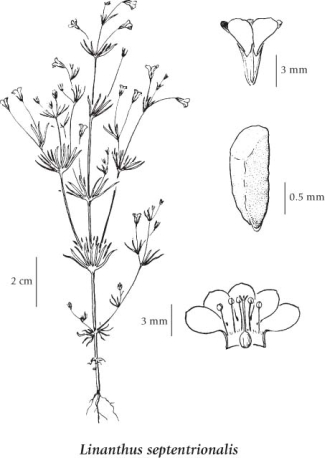E-Flora BC: Electronic Atlas of the Flora of British Columbia
Leptosiphon septentrionalis (H. Mason) J.M. Porter & L.A. Johnson
northern linanthus (northern flaxflower) Polemoniaceae (Phlox family) Introduction to Vascular Plants
|
|||||||||||||||||||||||||||||||||||||||||||||||||||||||||||
